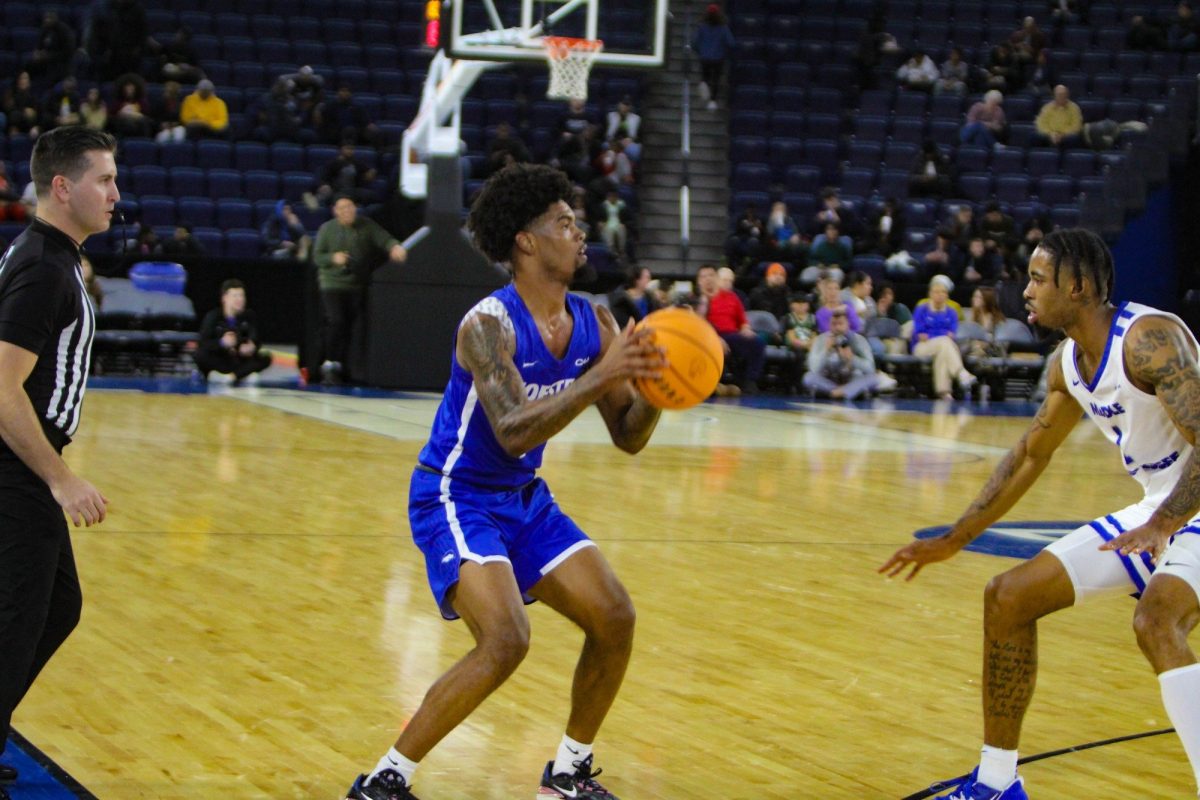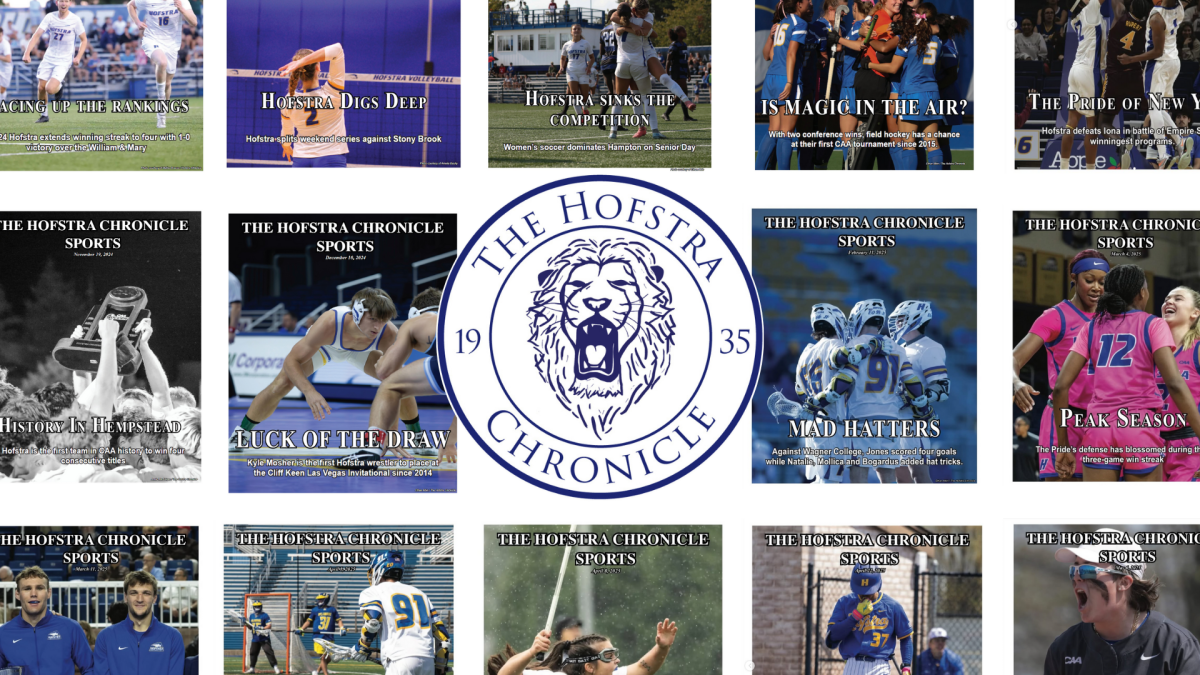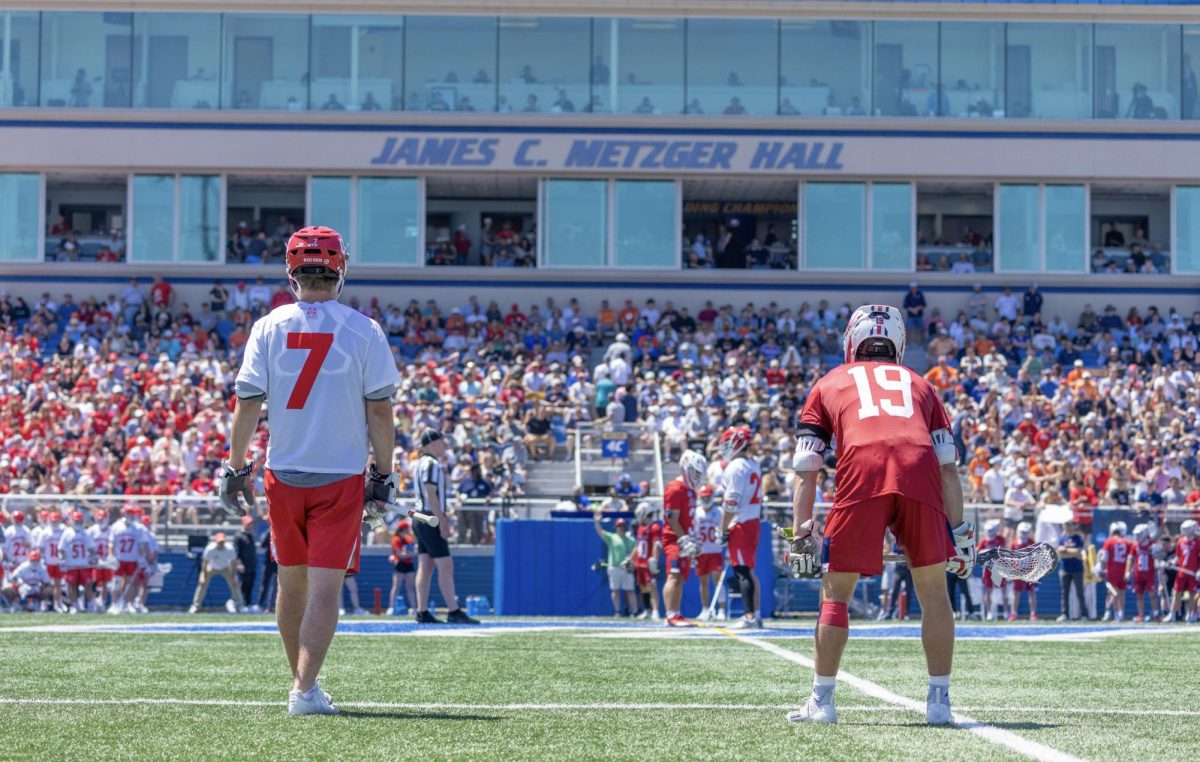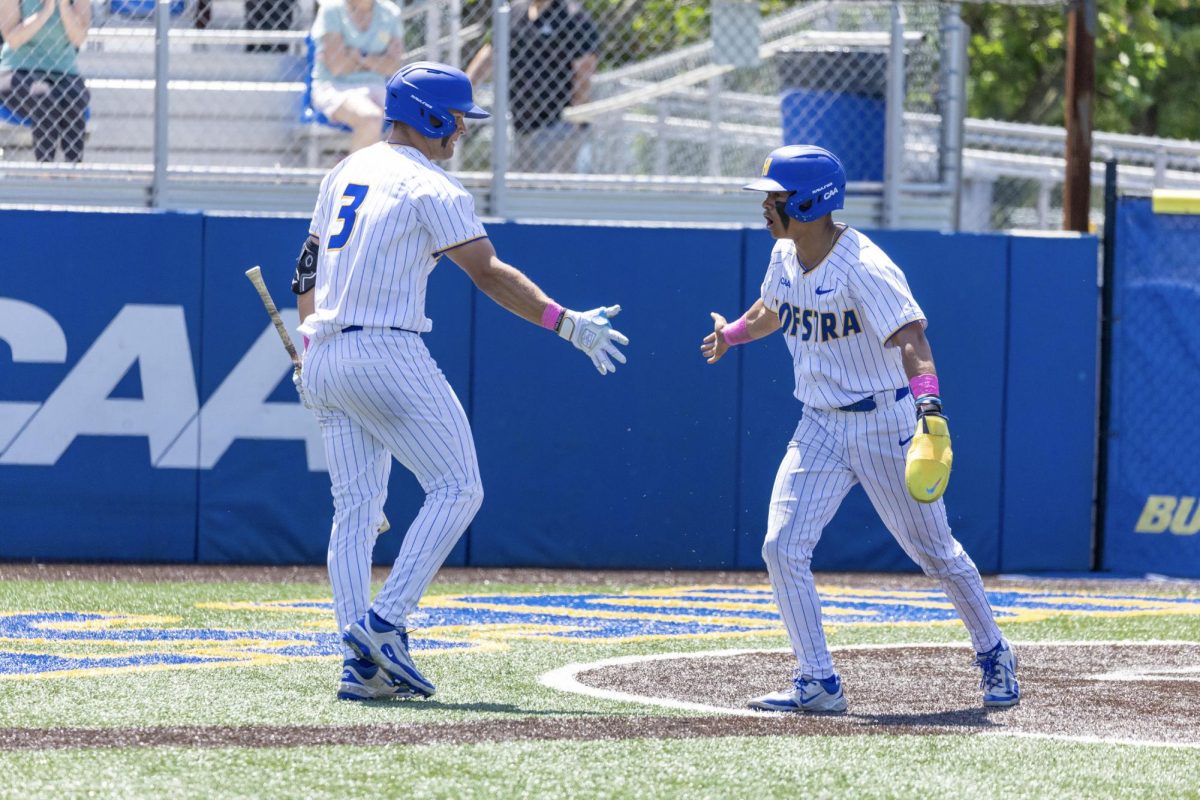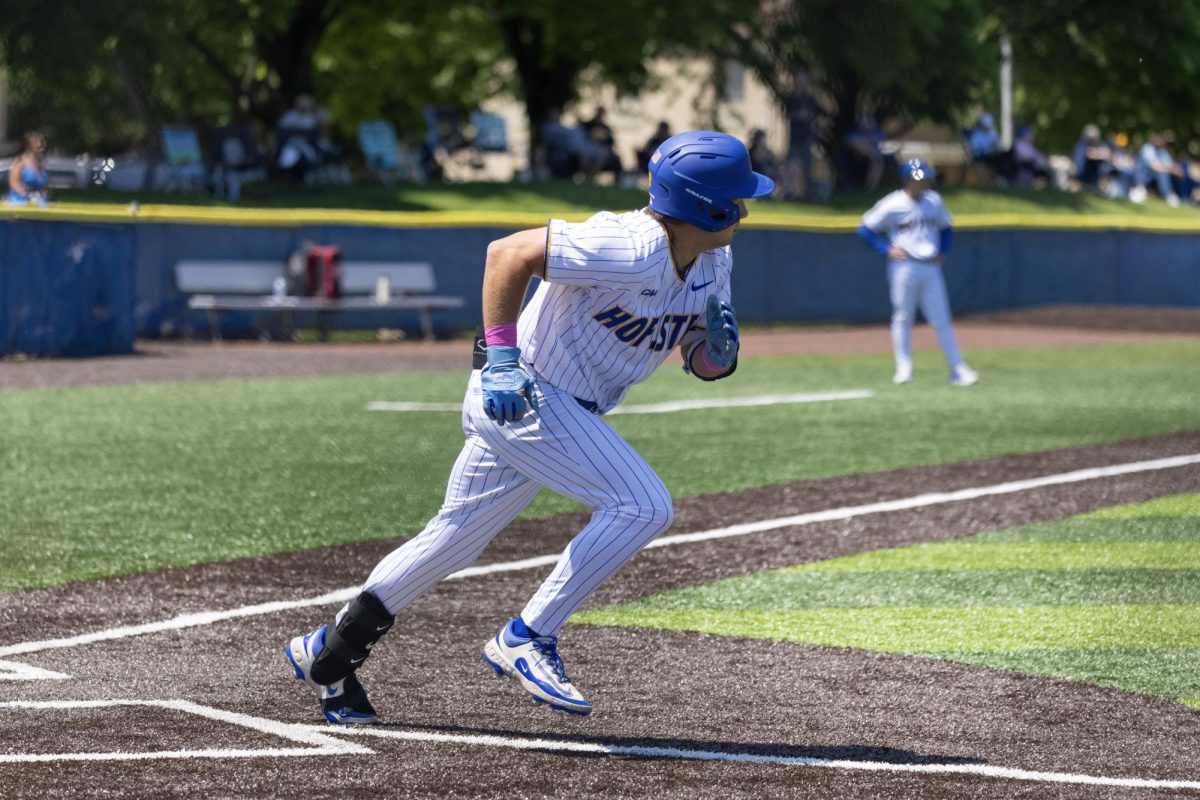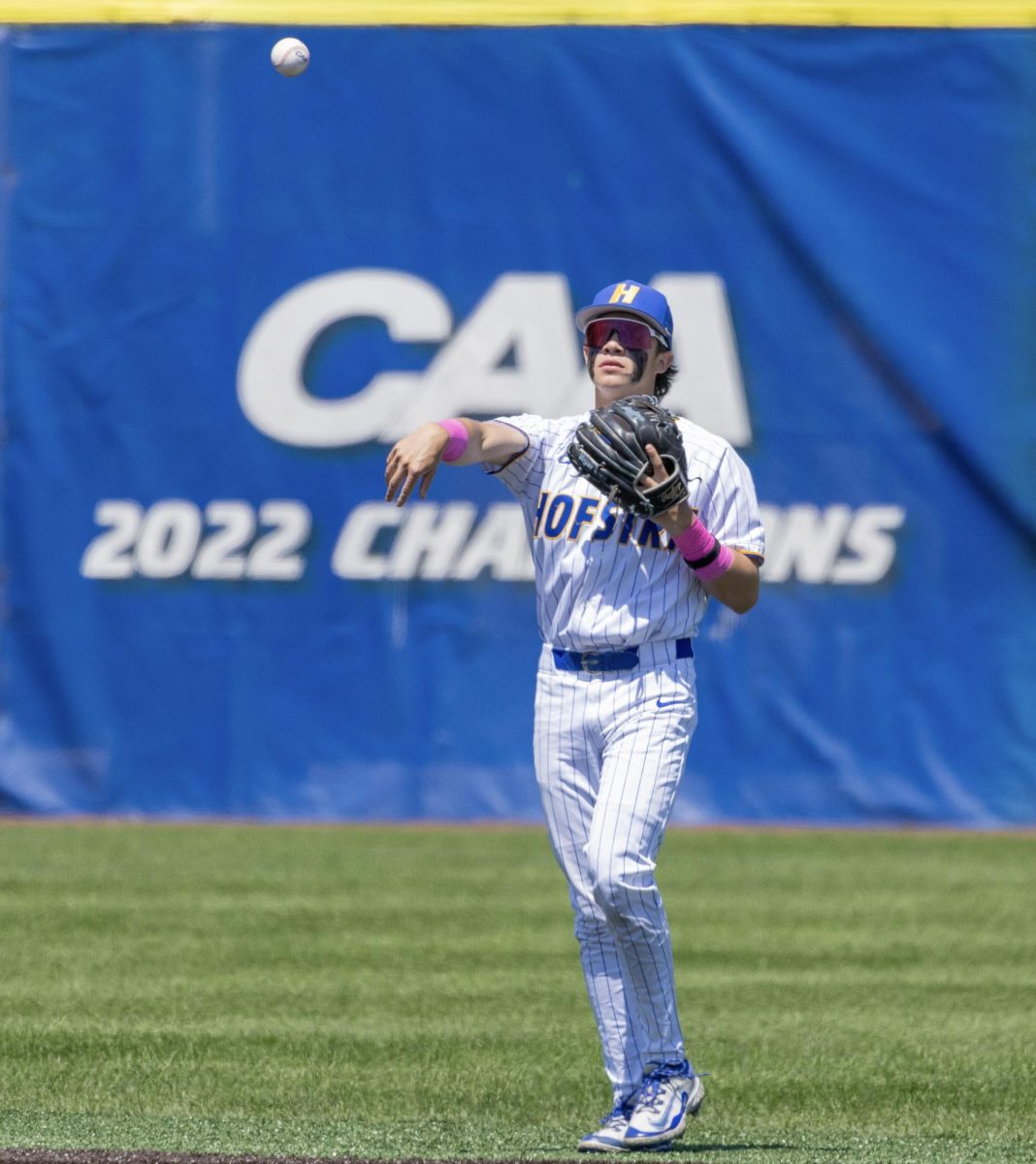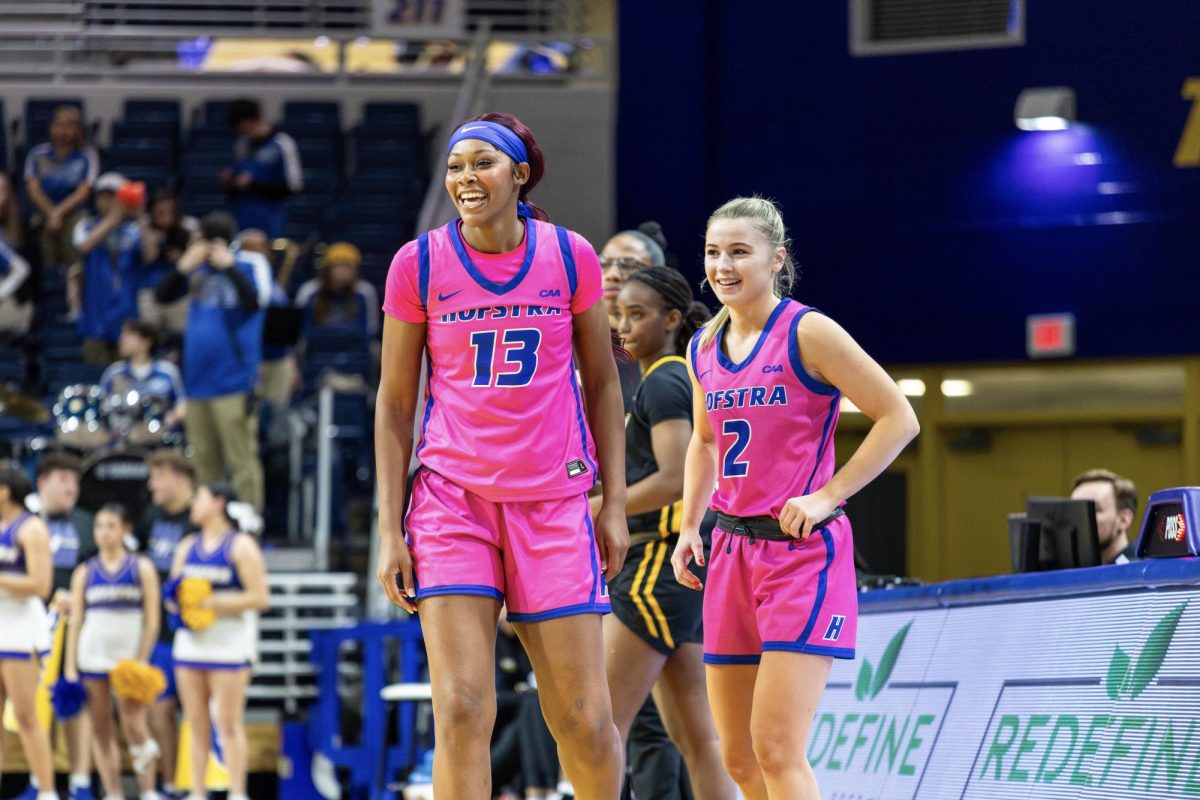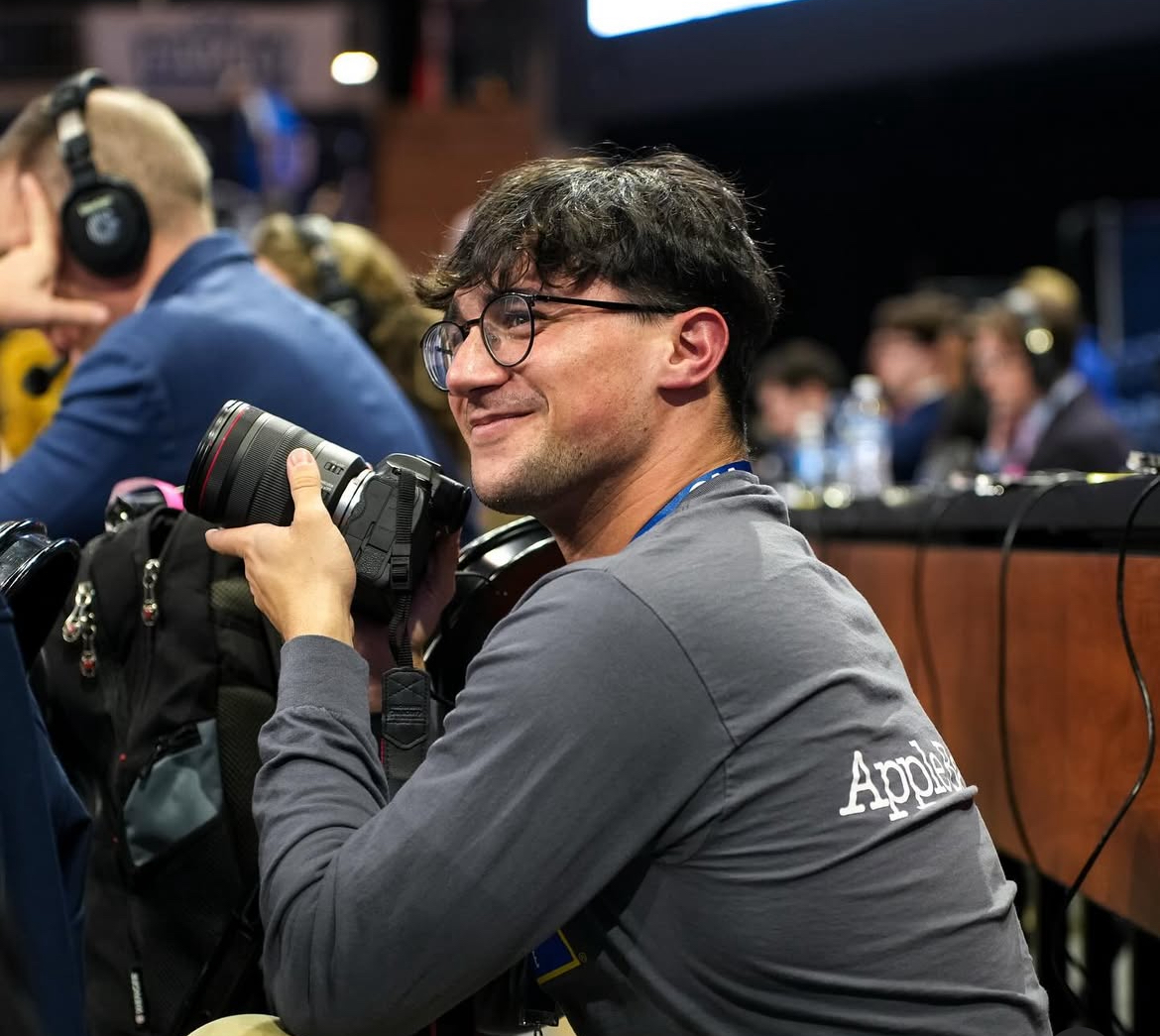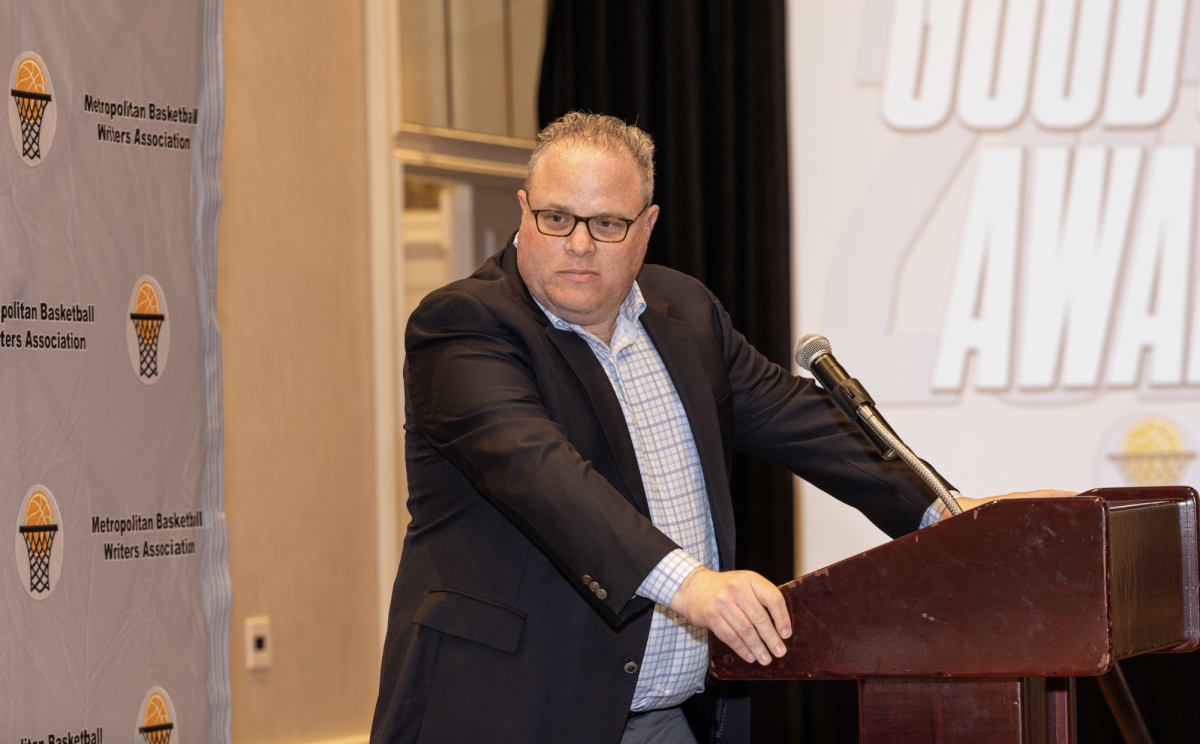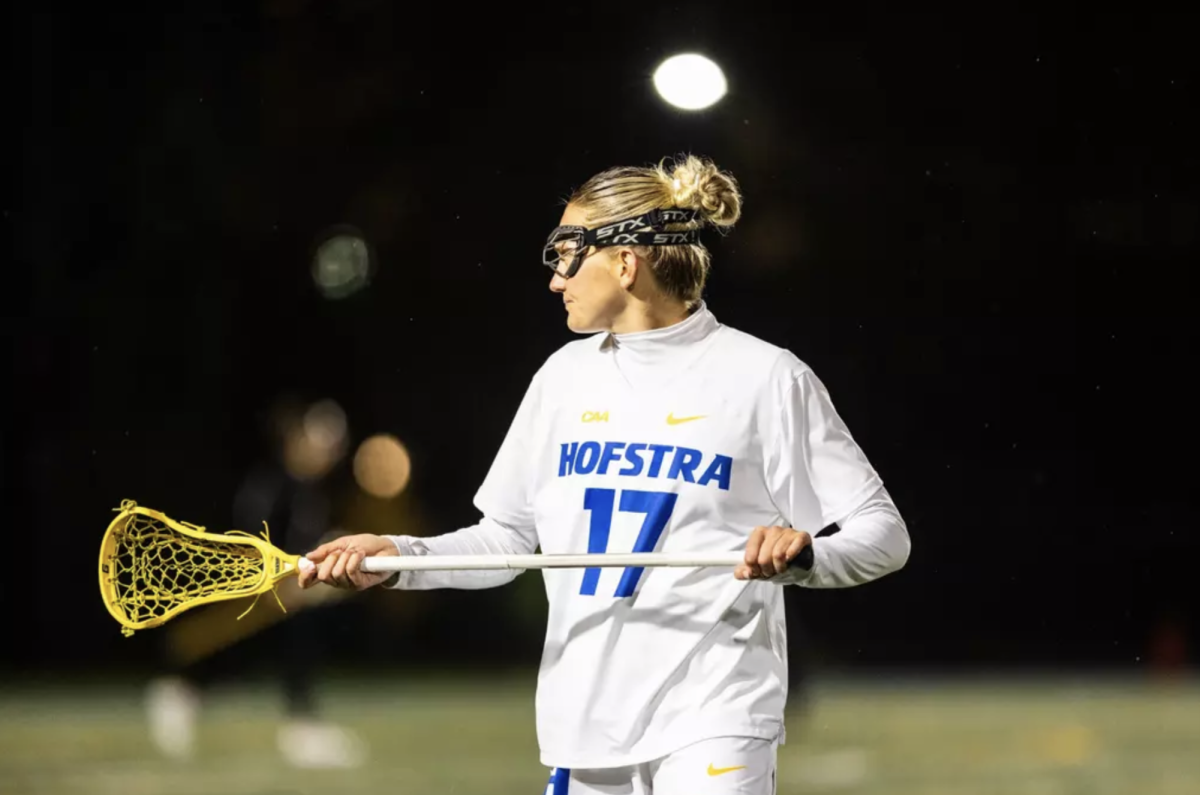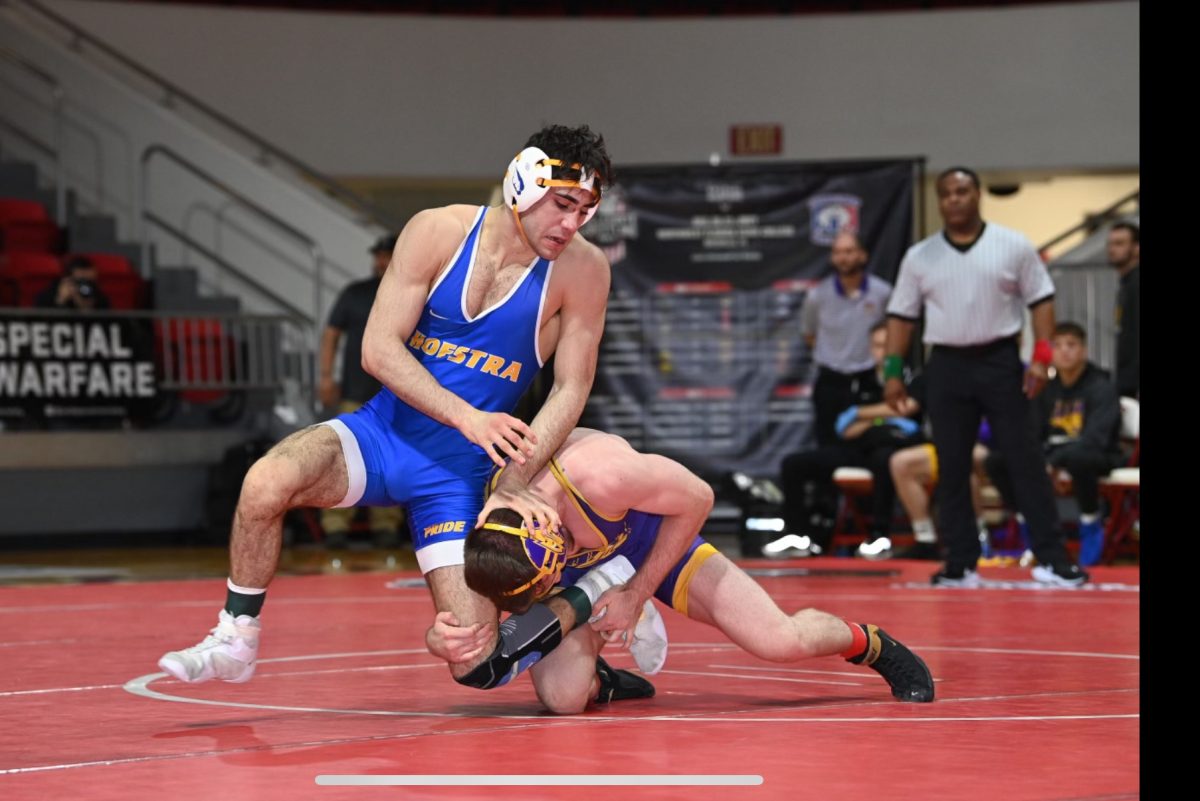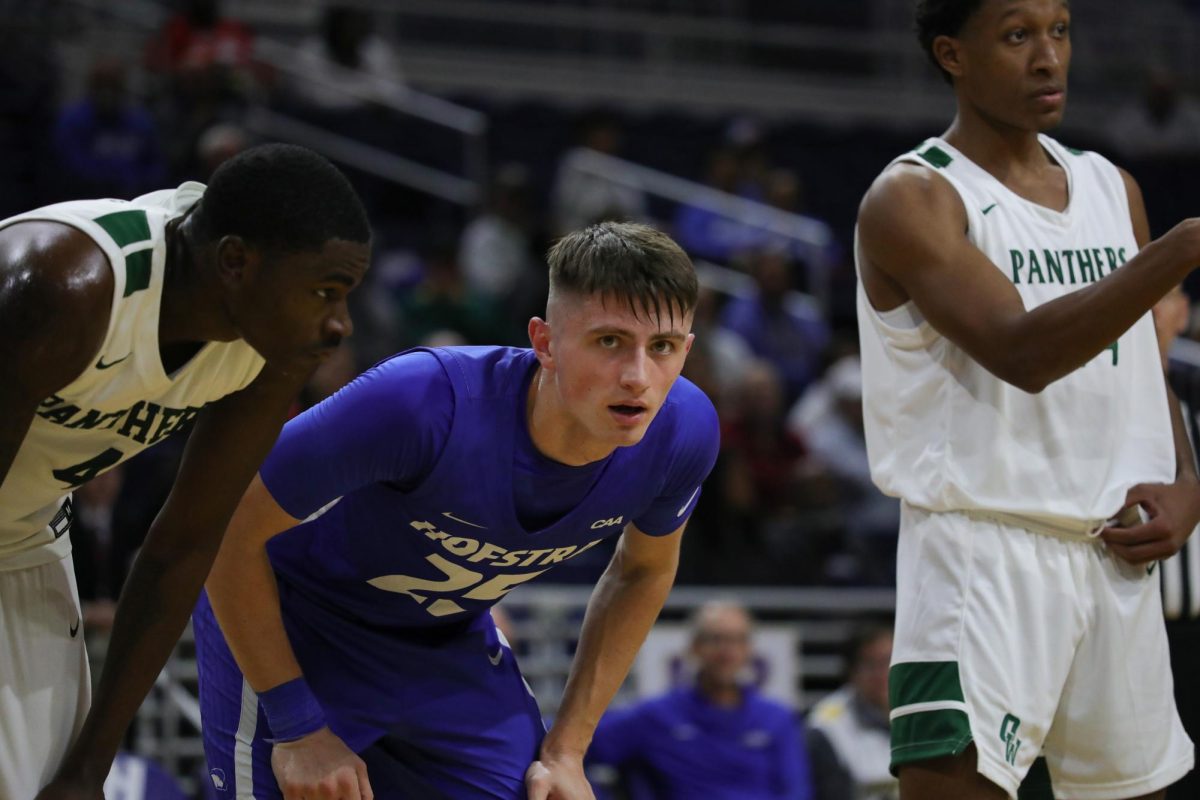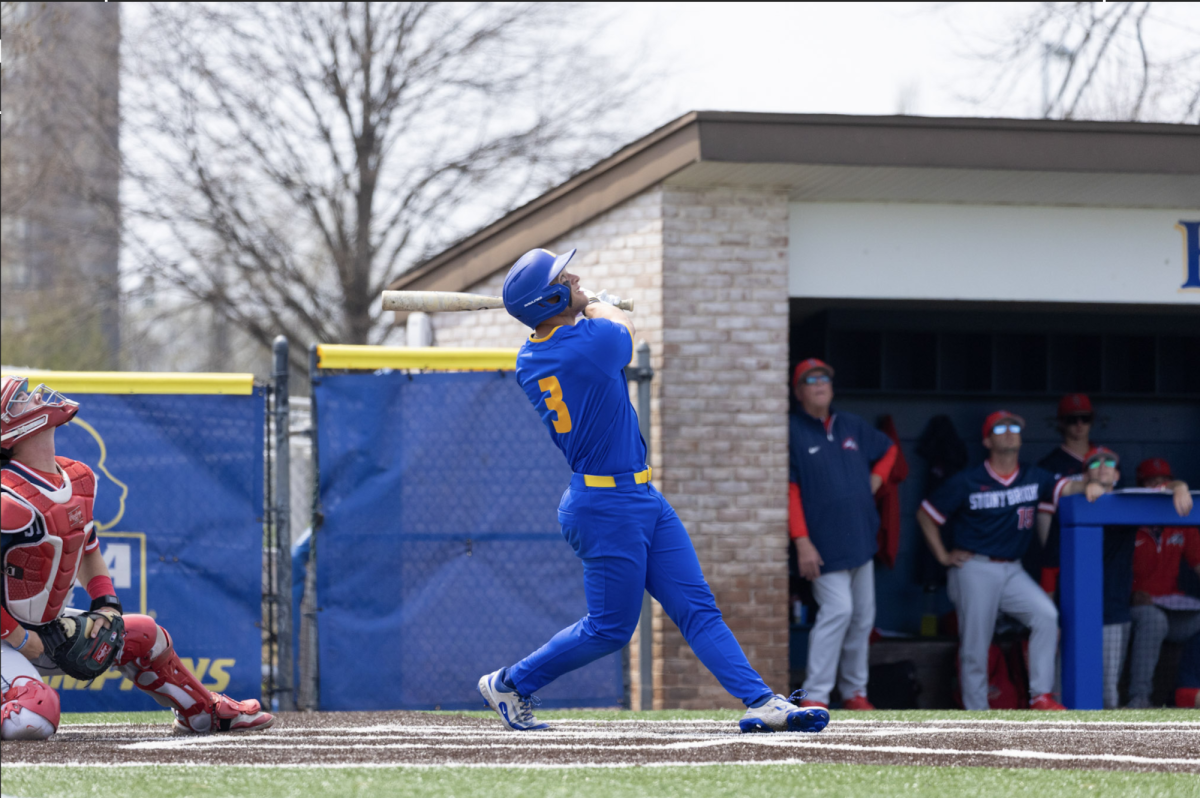For the past 17 months, the sports world has been on a constant rise with the NCAA’s new name, image, likeness (NIL) rule that allows athletes to make money off of their popularity, fame and performance inside and outside of the classroom. Across Long Island, many athletes have found success with the new NIL rule when it comes to promoting their status as student-athletes.
“The NIL has taken a huge toll on Power Five and non-Power Five schools,” said Alyssa Morales Kelly, Hofstra’s senior associate director of athletics for compliance, diversity and inclusion. “We have an internal department program-software called ‘INFLCR’ which provides educational tools and materials for our athletes at Hofstra to help grow their brands and to allow them the best opportunities for our NIL athletes.”
Aaron Estrada of the men’s basketball team earned the chance to get an NIL deal when his previous season with the Pride yielded 18.5 points, 5.7 rebounds and five assists on average.
“With my NIL deal, I got a couple of endorsements right now, and with the NIL, you could either ask for people’s merchandise or they could give you money,” Estrada said. “I try to go for the deals that give me money and that’s usually when the sponsorships are pushing for me to post more on my social media, on my story or a regular post.”
Estrada explained the details of his NIL deal.
“One of the deals that I have is Players Trunk and another with Campus Mogul,” said Estrada. “With Campus Mogul, they make T-shirts for me to sell to people who are interested in buying my gear. Every shirt that I sell, they’re getting profit from what I’m making as well because they make the shirts for me; they handle the shipping and it has my name on it, so it’s a good deal for me along with the Players Trunk.”
The NCAA officially made it legal for athletes to profit off NIL endorsements on July 1, 2021. Since then, over 450,000 student-athletes across the United States have already found ways to earn an income with their NIL by partnering with local businesses on promotions. Each state has begun to create rules and programs for student-athletes across the country that are interested in gaining sponsorship from different companies.
The goal of NIL is for student-athletes to profit and promote themselves by partnering with companies, corporations or businesses to help increase their following and fame while attending school. Athletes across the country are cashing in on deals from big-name companies and corporations.
NIL deals and endorsements can vary from social media posts with local businesses, wearing the company’s merchandise or gear, or partnering with the businesses for annual events.
Many student-athletes across the country deal with financial struggles while attending college, and NIL deals have helped with those struggles. The annual NIL value for a student-athlete could generally range from about $1,000 to $10,000, although there are exceptions where athletes could earn substantially more.
“I think NIL overall is a great idea and a fantastic opportunity for athletes to make money while playing sports,” said Gianna Iaquinto, a sophomore infielder on the Hofstra softball team who also has an NIL deal. “Even though athletes might be on a scholarship, it’s hard for athletes to make a living for themselves. I think it’s a great idea to make money and bring it in at the same time while also having your school paid for.”
As a current sophomore, Iaquinto is still learning more about NIL during her time at Hofstra.
“I’m sponsored by Good Sport, which is an energy drink for athletes, and what I do is I take pictures with the drink and they’ll advertise me with the drink on their social media pages to help promote it,” Iaquinto explained.
While thousands of athletes are thriving off of NIL endorsements and sponsorships, the 20,000 foreign athletes that play stateside are barred from the same experiences because of strict rules about working outside of school as a part of being a student on an F1 visa.
“It sucks,” said Sorelle Ineza, a senior guard on the Hofstra women’s basketball team. “It’s disappointing because as international players, we do the same thing as the players in the United States.”
There are more than 21,000 international student-athletes that are included in the interim NIL policy where they are required to have an F1 vßisa.
Ineza does like how the NIL format is structured and is supportive of others that are receiving funds for their deals.
“With the NIL, I’ve seen a lot of people give back to their communities by having camps, food drives, clothing donations and other things,” Ineza said. “They invest their money in a lot of things that help and improve their communities, and they’re not being selfish with their money.”
Hofstra has equipped its student-athletes with plenty of resources to help with their deals both inside and outside the classroom.
“NIL has always been happening,” Morales Kelly said. “Before the NIL being around, for two and a half years now, we have student-athletes here at Hofstra utilizing their name, image and likeness. As client professionals, the real intent of not utilizing the name, image and likeness were to not have student athletes’ name on Nike posters, Coke bottles and those type of things to make it an unfair advantage. Now we’re clearly in the exact opposite realm where everything is permissible.”
Photo courtesy of Hofstra Athletics


